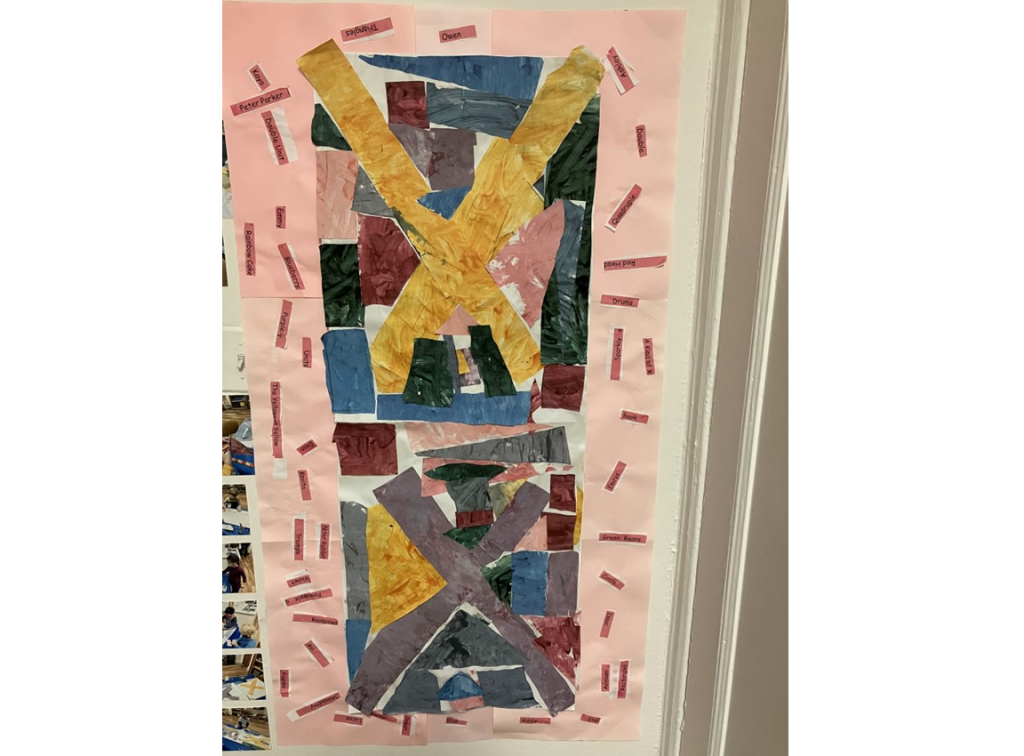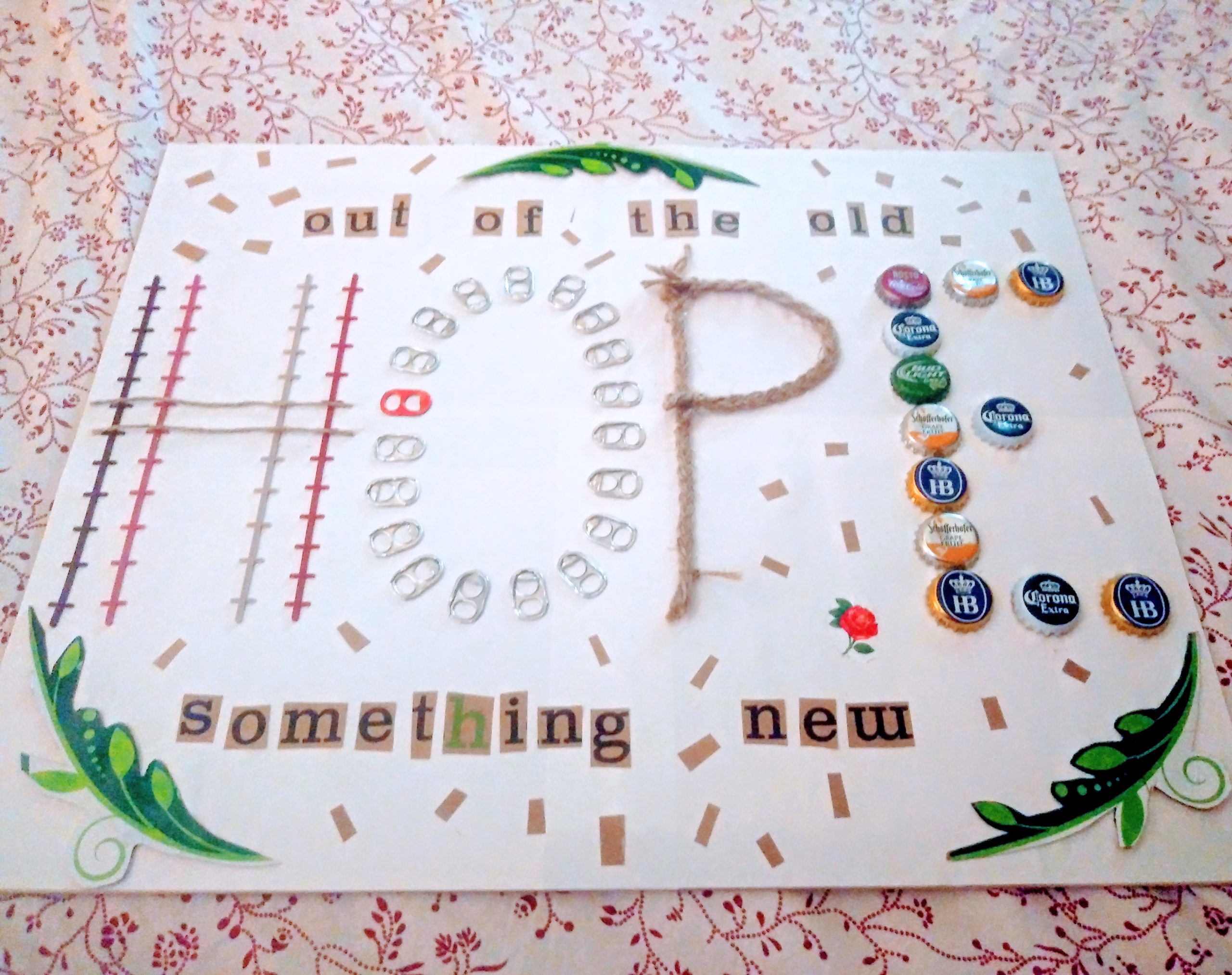Teaching for social justice can take on many forms. In child-centered early childhood classrooms, including my own, it can feel challenging to find projects that will be developmentally appropriate, productive, interesting, and open doors to critical thinking about the world and its history. As many of us have learned, a “developmentally appropriate” approach to social studies is to start small, with the children’s own families, then slowly build conversations in concentric circles around classroom communities, school communities, and neighborhoods.
One reason for the “concentric circles” approach is that young children make the most meaning out of concrete experiences. John Dewey and his colleagues wrote of this a century ago, and I still find the truth in it every day as I work with young children. But what I also find is that with the help of an interesting concrete experience, or a complex object, children can make a LOT of meaning.
During the height of the COVID pandemic it was possible (and necessary) to talk with my young students about the Black Lives Matter movement because they were seeing protests and political action literally through their bedroom windows. Striking workers on a picket line down the block from your school, an increasingly common sight, can create (and demand) space for nuanced discussions about labor in the United States. Social justice, after all, is, at its core, about fairness; and fairness is something that four- and five-year-olds know and care a lot about. But these discussions are prompted by current events, and the opportunities they present are somewhat happenstance.
Art, on the other hand, is consistently accessible. Introduce children to a work of art, and they can delve deep. Public art and exhibits in museums are constants here in New York City, and children respond with authentic inquiries to the richness of a work of art. Introduce them to a work of art by a Black Indigenous and Other People of Color (BIPOC) artist, and suddenly you have a window into the lived experiences of a person from a culture that may be far from their own experiences (or very familiar – the “windows and mirrors” that critical educators look for!), but is now connected to them through a magical portal of shared artistic experience. Works of art are extremely rich teaching tools, whether you are working with Visual Thinking Strategies, or Maxine Greene’s aesthetic education practices. Making connections between public art and social studies is very promising as a curricular tool.
The most recent example of this approach was a curriculum with my own four- and five-year-old students in response to our engagement with Apsáalooke (Crow) artist Wendy Red Star’s public exhibition Travels Pretty. Using Red Star’s work as a jumping- off point provided a platform for larger discussions about Indigenous survivance, which Anishinaabe scholar Gerald Vizenor defined in his 1999 book Manifest Manners: Narratives on Postindian Survivance as “an active sense of presence, and continuance of native stories” that are “renunciations of dominance, tragedy, and victimry” and futurity.
Travels Pretty is a series of works in which Red Star “explores parfleches, vibrantly painted rawhide bags made by certain nomadic tribes of the North American Great Plains” (Public Art Fund, 2022). In addition to her depictions of the parfleches, the artwork is surrounded by words and phrases – a common element of Red Star’s work. The parfleches themselves are vibrantly decorated with traditional geometric designs. It was these elements, the shapes and colors Red Star used, alongside her use of text within her artwork, which my four- and five-year-old students first identified and related to.
After visiting a few of the works myself on several bus shelters along Amsterdam Avenue, I planned to take the children to them on one of our weekly Thursday walks. On our walks we often go to take a deep look at something, whether it be a building, public art, or a natural phenomenon like a tree. We conduct visual inquiries, sketch, collect objects, and talk about what we see. Travels Pretty is a perfect match for our walks, and there are two of the pieces within a few blocks of the school. After discussing the idea with my two co-teachers, we decided that each of them would lead a half-group, take them to one of the works, and conduct a visual inquiry. I would go with the larger group and document. The two pieces we visited were Buffalo Woman and Takes Pretty Things. Each of the 12 pieces in the exhibition is named for a woman whose name Red Star found in records, either at a museum that owns a parfleche, or in other related historic records of Apsáaalooke women that she discovered in her research.
The works were quite accessible to my young students. They were immediately drawn to the shapes and colors of the designs. They noticed the long white bars in diamond and X shapes, rectangles and triangles, along with other shapes. At first I found myself a bit disappointed by their noticings. They seemed so mundane, and I even found myself wondering if they were not connecting to the work. But I realized as I observed the children that they were engaged. Red Star’s work captivated them, and it was the geometric patterns and the color palette that they were connecting to.
They also noticed the words surrounding the parfleches, though only one or two could read them. The teachers read the words, and some of the children noticed that there were many references to women and natural materials surrounding the work. We discussed the feminist nature of both the parfleche and Red Star’s work, and this appealed to one or two of the children. We also saw the word Apsáaalooke and this opened the door to give them some more information about Red Star and about her background as an Indigenous artist raised on Apsáalooke lands in Montana. This information, given in the context of their encounter with Travels Pretty, did seem to grab the groups’ attention, which was what I had been hoping for. We looked at a map and saw where those lands were in the United States. One of the children wondered why there weren’t any native people here in New York City, and we were able to let them know that there were, and tell them that our school was actually in the traditional lands of Lenapehoking, and that there were still Lenape people living here today. This was amazing news to them.
After the walk we continued our inquiry into both the artworks and Indigenous survivance. As we deepened our hands-on engagement with the elements of the work – shapes and words, working in our art studio to create works inspired by the parfleches, we also learned about Red Star, her identity, and the wider Indigenous community. By seeing Wendy Red Star as alive “still here” we disrupted narratives of historicization and established a meaningful connection between these urban (non-Indigenous) children and contemporary Indigenous culture.
We also used diverse Indigenous stories in children’s literature to extend our study. We read the picture book First Laugh-Welcome Baby! by Rose Ann Tahe, Nancy Bo Flood and J.Katz Nelson. We discussed that the authors and illustrators of the book were also Indigenous and mentioned their tribal affiliations. I like this book for many reasons, but the biggest one is that it shows how Diné people live in a variety of different ways. The baby and their parents live in a city, and his grandparents live in the country on Navajo lands.
I used the book to talk about the different places and ways that Indigenous people live and even managed to mention the Navajo Nation and sovereignty. The children were interested in this, and I definitely saw some surprised faces when we talked about Indigenous people and tribes still being here and having their own lands and laws. Our multimodal approach also included reading, cooking and eating Kevin Noble Maillard’s version of Fry Bread (Maillard, 2019), which we shared with our community in a culminating gathering and unveiling event for “our own Wendy Red Star.”
This entire project was built from the children’s initial concrete experience of seeing Travels Pretty in the bus shelters. The children engaged with the artwork in an authentic and developmentally appropriate way that led to further inquiry into Indigeneity and an aspect of social justice learning that is often difficult to make concrete for young children.
How can you make teaching about social justice issues concrete and appropriate for young children?
David Vining is a doctoral candidate in the Early Childhood program in the Curriculum and Teaching department at Teachers College, Columbia University. He has been a preschool teacher at Columbia Greenhouse Nursery School for over ten years. David is a member of the Early Career Scholars program at the New York City Early Childhood Research Network .



